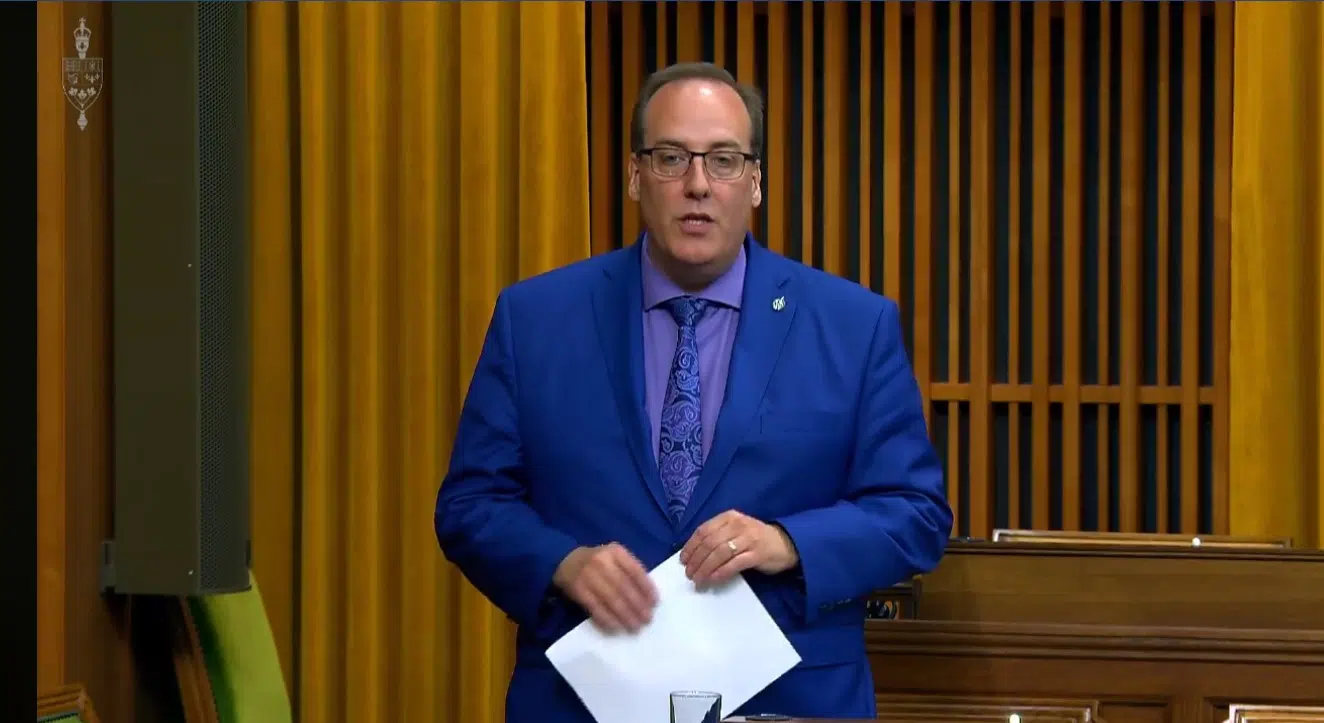
West Nova Conservative MP Chris d'Entremont addresses the House of Commons on Tuesday, May 26, 2020.
West Nova Conservative MP Chris d’Entremont sees this year’s federal budget as an indicator that the Liberals see an election on the horizon.
The budget boasts a $155-billion deficit, with some of the biggest new spending coming for child care and long-term care.
These figures will take the national debt over the $1-trillion thresholds for the first time ever. “When you borrow money it has to be paid back, so now we are dealing with paying off the loans and the service fees, which now are close to a billion dollars every month,” said d’Entremont. “Wouldn’t that money be better spent if it actually went to providing programs and services that Canadians need rather than servicing debt?”
New spending accounts for $101.4-billion with over $30-billion of that being directed towards new child care initiatives. The Trudeau government says the new spending will lead to $10 a day child care by 2025.
Whether that actually happens and how effective that program will be is being questioned by d’Entremont. “The Liberal government has promised a nationwide child care program nine times so this wouldn’t be the first time programs like this don’t live up to expectations,” he said.
The program also faces challenges in areas like d’Entremont’s riding of West Nova. “This program is only for federally approved or federally run facilities so based on where you live there might not be many of those facilities available, leaving many families unable to access it,” he said
As for positive takeaways from the budget, the Conservative MP didn’t have much to commend but he was pleased with the $300-million going towards revitalizing small craft harbours.
“There is a growing need in these small harbours for major repairs and updating so it was good to see money going towards that but with so many small communities across the country facing these challenges I feel more could have been done.”
Overall, d’Entrmont says the budget is what he would expect of a government forecasting an election, with it containing lots of exciting new spending but adding limited information on how the new spending will be implemented and how effective it will be.








